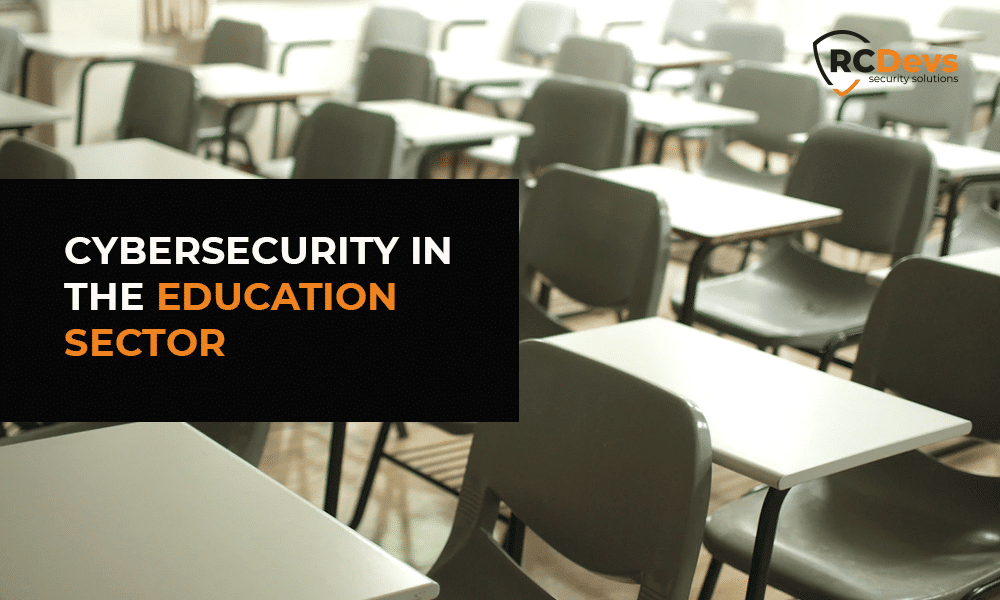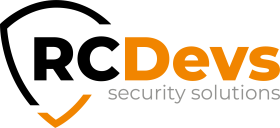
Cybersecurity in the Educational Sector
Cybersecurity in the Educational Sector
Cybersecurity in the Education sector is gaining more importance with the sudden shift of education to virtual environments. With different variants of covid, we never know when everyone will be back to school or when we might be going to 100% virtual again.
While many institutions have taken cybersecurity measures, others fall short due to financial restrictions. But what are some of the basic and very effective measures students, teachers, and IT administrators of an institution should follow?
Why is CyberSecurity Essential in the Educational Sector?
Here are the major reasons for the popularity of the education sector as a target among cybercriminals:
1. Financial Advantage
As per research, Educational records can fetch up to $265 on the black market. The notion of such huge financial gain is more than enough for threat actors to target academic institutions.
2. Operate in open technology environments
With so many devices bought by students and faculty members to connect to the university’s infrastructure and with few restrictions in place, security teams don’t have the chance to ensure every device is secured.
3. Highly valuable data
Even though healthcare or private company’s data looks more lucrative than the educational sector, this sector data contains financial and personal information. Also, universities and colleges often are the centers for research and possess valuable intellectual property.
4. Low tolerance for downtime
Generally, higher education institutions have a low tolerance for downtime. Additionally, every year there are fresh faces who are not very familiar with privacy policies.
Recent cybersecurity attacks in educational institutions
- The University of Northampton was hit by a cyber attack in March 2021 that led to the disruption of its telephone and IT systems and servers.
2. In March 2021, 15 secondary schools based in Nottingham were unable to access emails or their websites after a central trust that manages their systems was hit by a cyber attack.
3. Birmingham college was hit by a ransomware attack and had to ask all of its 20,000 students to stay at home for a week. It had not even been two weeks since they had returned to the college following an extended lockdown due to the COVID-19 pandemic.
4)In March 2021, the London-based Harris Federation suffered a ransomware attack and was forced to “temporarily” disable the devices and email systems of all the 50 secondary and primary academies it manages. This resulted in over 37,000 students being unable to access their coursework and correspondence.
5. The Division of Structural Biology at Oxford University fell victim to a cyber attack in February 2021. It was involved in extensive COVID-related research and access details for several of its systems were spotted online.
6. Take the February 2021 cyberattack that victimized Simon Fraser University in British Columbia, Canada. As per reports, hackers breached a server containing sensitive information like student and staff ID numbers, admissions details, and other academic records. In all, about 200,000 people were affected by the cyber attack.
This data breach came one year after cybercriminals compromised the personal information of 250,000 individuals who attended or worked at the same university.
How to Protect Educational Institutions from Cyber Attacks
To protect oneself and the data in an educational environment- students, teachers, and employees require access to a mixture of education and IT security solutions.
For better understanding, below is the list of tips to be followed by students, teachers, and IT administrators.
Tips for students to protect from cyberattacks:
CyberSecurity Tips for Students:
1. Secure your social media
Social media like Instagram, Facebook, Twitter, etc is engaging and fun but securing your account and information is very important. Review the privacy settings of each account to protect privacy rights. Example- In Facebook make the account ‘Visible to friends only’ in the privacy control settings.
2. Be careful with Phishing
Do not open email attachments from untrusted sources. You may be expecting emails from group members or teachers, but use caution when opening any attachments.
3. Cover your webcam
Turn off or block cameras and microphones when class is not in session. Also, be sure that no personal information is in the camera view.
4. Use strong passwords
Cracking short and simple passwords is easier for hackers, adding complexity to your password prevents that.
5. Use apps, tools, and websites that encrypt data
Use encrypted websites: Use only websites with ‘HTTPS’ in their URL and a padlock icon next to it. The ‘s’ stands for ‘secure’ (encrypted), which means that any data leaked or obtained by unauthorized parties is unusable.
Cybersecurity tips for Teachers:
Following the below rules will help teachers to protect themselves from cyberattacks:
1. Secure your virtual classroom
With classes still going online, the last thing you want is an unwelcome stranger joining your virtual classroom. Only accessing the virtual classroom on trusted networks, not posting the virtual room link anywhere that can be accessed by the public- can help you manage better.
2. Avoid suspicious communication
Cybercriminals tempt you to click a suspicious link and enter your account details—unwittingly handing over important private info. This is especially dangerous if you’re using the same login credentials for multiple accounts. Be sure to check the domain of the sender and research common scams.
3. Protect Identity and Location
Disable photo geotagging on your android or iPhone. Also, advise your students to avoid sharing any personal information like age, address, phone number, or any personally identifiable data.
4. Download a VPN
Use VPN to connect to the internet. As it masks your IP address, it adds an additional layer of security and helps keep your personal data safe. Also, it encrypts your online traffic, which prevents the hacker from accessing your whereabouts.
5. Comply with your Institution’s Cyber Protocols
With homeschooling and covid, mostly your school already has cybersecurity measures in place to protect users. You should follow their provisions and get in touch with the IT department if you suspect anything suspicious.
Cybersecurity tips for Education Sector Administrators/ IT Department
When it comes to the educational sector IT administrator, it is a huge responsibility to make all the teachers, students, and other people visiting cyber safe. But using the below 5 tools will definitely help you in securing access to the network.
1. IAM Solution
Identity and Access Management (IAM) solution will help in preventing any unauthorized access to the network. Try to choose a solution that works on on-premise and cloud services. Also, flexibility should be a prime concern.
RCDevs Solutions is compliant with regulations as well as manages and reduces risk. Our solution easily integrates with nearly every popular web, cloud, on-premise, VPN, remote access gateways, and many other applications.
2. Multi-Factor Authentication (MFA)
Enable Multi-Factor Authentication (MFA) on all the applicable endpoints across the networks to add an extra layer of security to your institution’s cybersecurity framework. MFA could be through hardware token, software token, voice biometrics, etc.
RCDevs’ include all authentication scenarios, whether one user accesses many systems, or many users access one system. It also includes digital e-signature via push notification on smartphones.
3. Single Sign-On (SSO)
Generally, professors or students might need to sign in multiple times to access the data for different departments. Removing the need for remembering the password for multiple departments and implementing SSO i.e. users can securely access all the applications by logging into a web portal once can save time and increase productivity.
RCDevs’ OpenID / SAML Identity Provider works with both OpenOTP and TiQR authentication back-ends. With TiQR, your users will authenticate by simply scanning a QRcode on the login page. The RCDevs’ SSO solution supports PKI-based authentication too (with client certificates).
4. Secure VPN Access
The education sector is moving more towards digital, securing VPN is a must to protect everyone from remote access.
RCDevs’ OpenOTP MFA VPN Solution is 100% compatible with RADIUS and LDAP standards. Protect any remote access to your network by adopting OpenOTP multi-factor authentication for your VPN and SSL VPN solutions. All VPNs, SSL-VPNs, and Firewalls are supported.
5. Network Access Control (NAC)
NAC solutions have become an extremely valuable tool in recent years, as mobile devices and the Internet of Things (IoT) have surged to prominence in the education sector. Network access control technologies (ie. NAC) provides a user/client authentication layer for your Ethernet switches and Wifi Access Points.
RCDevs Security Solution is the only solution that supports OTP for WIFI.
Cybersecurity in the education sector is essential for about a hundred reasons, the most important one of them being to ensure the safety and privacy of students. So, take the necessary measures now and keep your organizations protected against cyber threats.
Contact RCDevs Security Solutions for getting a free consultation on how you can secure your environment.

